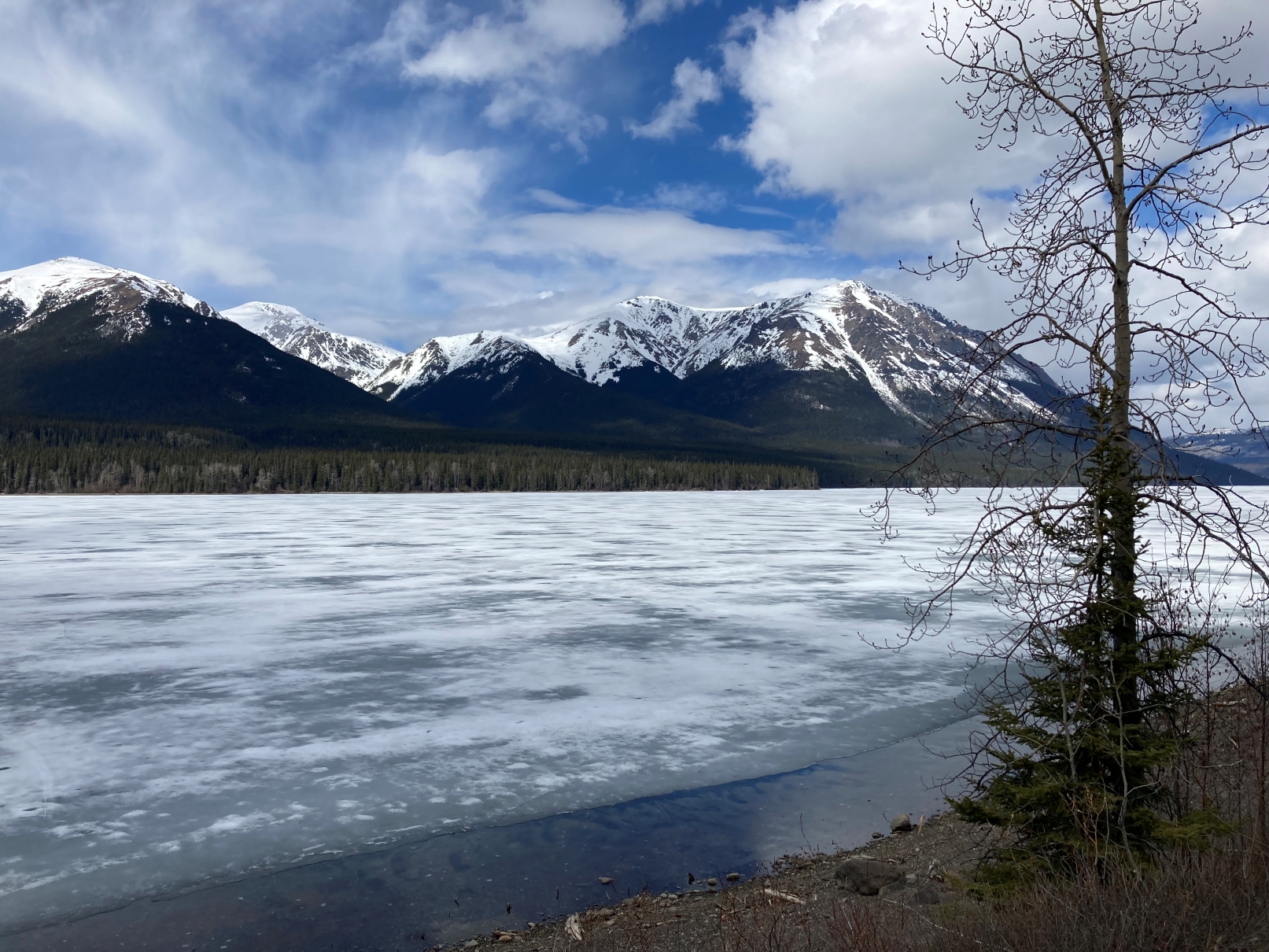Eddontenajon Lake
 Eddontenajon Lake as seen from Highway 37, Northern B.C.
Eddontenajon Lake as seen from Highway 37, Northern B.C.
It is Red Dress Day here in Canada. A time to remember the history of missing and murdered Indigenous women, girls, and 2SLGBTQI+ people. It has been six years since the publication of a report resulting from a national inquiry on the subject, containing over two hundred recommendations to address systemic mistreatment of First Nations, Inuit and Métis peoples, and to improve their safety through more proactive approaches. The nation has been slow to act, implementing only two of those recommendations to date.
I must admit, much of what I know about Indigenous history, its associated legacy, and ongoing racism towards Indigenous people was learned in my adulthood (at university and through my professional life). Things may gradually be improving, but when I was in elementary and secondary school, we were taught very sanitized lessons of colonial conquests following European contact. At best, we were provided a cursory overview of the darkest chapters, never long enough to truly comprehend their meaning or to begin to understand their modern offshoots.
In that respect, I did not even know what Red Dress Day really was, or how it was marked, until I joined an Indigenous health organization in 2021. During that experience, stories found their way through the generations and their keepers to my ears, as I travelled and worked across rural and remote Northern B.C. communities. Like the glaciers atop the tallest mountains or overwintering fires, those memories persevered through arduous conditions. In a way, immutable. Imbuing in their carriers strength to continue the fight for acknowledgment, restoration, and justice.
– – – –
In the tradition of storytelling, allow me to share a memory on the lighter side of this annual commemoration.
On this day in 2022, I was in Iskut, a community within the Tahltan territory, for a work engagement. I was invited to participate in their annual Red Dress Day walk, a trek that started from their nursing station to a point approximately 13km south, ending at a traditional gathering space utilized for community events. The walk began with a smaller group of health staff, schoolchildren, teachers, and other community members. Some brought pictures of loved ones lost, while others wore pieces of traditional garb. Gripping our morning coffees, we set out in good spirits. When we reached the southern entrance of the community, heading onto Highway 37, we were joined by other Elders and members. About forty to fifty people in total.
Up front, an RCMP vehicle escort led the way, closely followed by a local athlete, who was jogging (quickly putting distance between themselves and the group). For the first little bit, I strode alongside a larger contingent, making small talk and sharing anecdotes. After half an hour, a nurse and I found ourselves well ahead of the rest of the group, mostly children. It was not long after that we seemed to be alone, unable to spot the stragglers but assured they were well accompanied by the teachers. We did notice a few vehicles drive by with schoolchildren inside, so supposed some people had hopped into cars with their families. Safe to assume younger kids would not enjoy a 13km hike along a highway. The nurse and I walked the entire way, thinking the others would catch up eventually as we took in the surroundings.

The walk was flat and undemanding. The sun played hide and seek behind clouds and peaks, as we looked on at Eddontenajon Lake in mid-melt. Its edge succumbing to a deeper blue as the afternoon approached. It was either late winter or early spring, still chilly but with splashes of warmth. The lengthy loch was our unmoving companion, though slowly morphing its puddled complexion as the sun rose higher.
When we did arrive at the gathering space a few hours after starting the journey, we were greeted by the entire community preparing for lunch. Turns out, everyone had gone around a kilometer down the road and then hitched rides with their friends or families the rest of the way. (I must have missed them as I was taking pictures of the landscape throughout.) The nurse, jogger, and I were the only ones who had bothered to travel on foot. Apparently, driving the annual ‘walk’ was common practice.
If only one of them had rolled down their windows when passing to clue us in! Alas.
Everyone laughed and offered their congratulations, surprised that we had walked the entire way. The Elders gave us a gentle ribbing, but noted how much better the food would taste after the exercise. They were not wrong. We joined the group, some clustered around a campfire outside and others in a woodstove-heated lodge, for a hearty traditional feast.
– – – –
I do not regret the long hike that day. It was a pleasant and meaningful experience. Weather depending, I would happily make that call again. But you, dear reader, are hopefully now better informed. If you ever find yourself along a remote community on the Stewart-Cassiar on Red Dress Day, try to make a friend with a vehicle. Just in case.